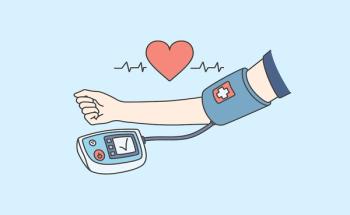
Low-Sodium Oxybate: An Equally Effective but Safer Alternative to High-Sodium Oxybate for Narcolespy
A prospective study concluded that patients with narcolepsy can safely switch from a high-sodium oxybate to a low-sodium oxybate to manage their symptoms.
Patients with
In January of 2017, the FDA approved oral SXB for the treatment of narcolepsy for those who experience excessive daytime sleepiness or cataplexy.2 With this announcement, SXB notably became the first generic medication indicated for this patient population. Due to its association with severe adverse effects, including breathing issues, seizures, coma, and even death, it has been subjected to strict Risk Evaluation and Mitigation Strategy (REMS) program as a part of its approval.
LXB became the first FDA-approved drug for the treatment of idiopathic hypersomnia in August of 2021.3 Previously, LXB, like SXB, was also approved for the treatment of excessive daytime sleepiness and cataplexy for patients with narcolepsy, and dispensed through a REMS program due to the risk for misuse or abuse. The primary molecule in SXB and LXB is gamma-hydroxybutyrate (GHB), which is a Schedule 1 controlled substance that can drastically impair one’s alertness and respiratory function.
An important difference between SXB and LXB is that LXB contains 92% less sodium.1 Because patients with narcolepsy carry an increased risk for cardiovascular issues, the present authors expressed how effective lower-sodium regimens are for improving cardiovascular morbidity outcomes. Therefore, they conducted a study to investigate patients with narcolepsy who transition from SXB to LXB.
Participants were patients aged 18 to 80 years who were diagnosed with narcolepsy type 1 or 2, and followed a steady SXB dosing regimen. For the first 2 weeks of the study, they continued their typical SXB dose before transitioning to an equal LXB dose for the next 6 weeks. To measure their experiences and adjustment to the new medication, researchers utilized the Epworth Sleepiness Scale (ESS), ease of switching medication scale (EOSMS), Patient Global Impression of Change (PGIc), and the forced preference questionnaire (FPQ).
In total, 54 of the 62 included participants who finished the study. On average, the initial and end doses of LXB were 8.0 g/night, and ESS scores were 9.4 and 8.8, respectively. In 45% of participant responses to the PGIc, noticeable improvements were reported; however, 48% reported no changes in their symptoms. Furthermore, results from the EOSMS revealed that 93% of participants felt the transition from SXB to LXB was “easy,” and the FPQ demonstrated that 79% of participants favored LXB over SXB, largely due to the reduced sodium content.
Overall, throughout the Substitution of Equal Grams of Uninterrupted Xyrem to Xywav (SEGUE) study (
The culmination of these results further support the use of LXB in narcolepsy, and its significantly lower sodium levels demonstrate that it may be superior to SXB, especially in cases of elevated cardiovascular risk.
References
1. Macfadden W, Leary EB, Fuller DS, Kirby MT, Roy A. Effectiveness and optimization of low-sodium oxybate in participants with narcolepsy switching from a high-sodium oxybate: data from the SEGUE study. J Clin Sleep Med. Published online April 23, 2024. doi:10.5664/jcsm.11182
2. FDA approves a generic of Xyrem with a REMS program. FDA. January 19, 2017. Accessed June 21, 2024.
3. FDA grants first of its kind indication for chronic sleep disorder treatment. News release. FDA. August 12, 2021. Accessed June 21, 2024.
Newsletter
Stay ahead of policy, cost, and value—subscribe to AJMC for expert insights at the intersection of clinical care and health economics.







































